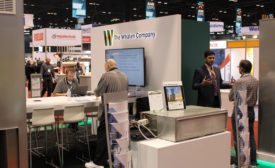Home » building codes
Articles Tagged with ''building codes''
High-efficiency Air Movement Options Remain in High Demand
Occupant comfort, energy savings, and increased efficiency goals are driving consumers’ demands
Read More
Why Would A Hospital Consider Absorption Chillers?
While CHP is good, CCHP can be even better for your facility and its locale. The author surveys the potential benefits, building code input, and electrical considerations. After a couple of case studies, she then reviews considerable engineering re-sources the DOE provides for those contemplating a forward-looking but proven design.
Read More
Dec. 5, 2014: ACCA Releases New Video Series for Code Officials
Aids in the Enforcement of Code Requirements Related to HVAC System Design
December 5, 2014
Alliance to Save Energy, BCAP Announce Split
BCAP to Begin Operating as Independent Organization
June 23, 2014
Copyright ©2024. All Rights Reserved BNP Media.
Design, CMS, Hosting & Web Development :: ePublishing











